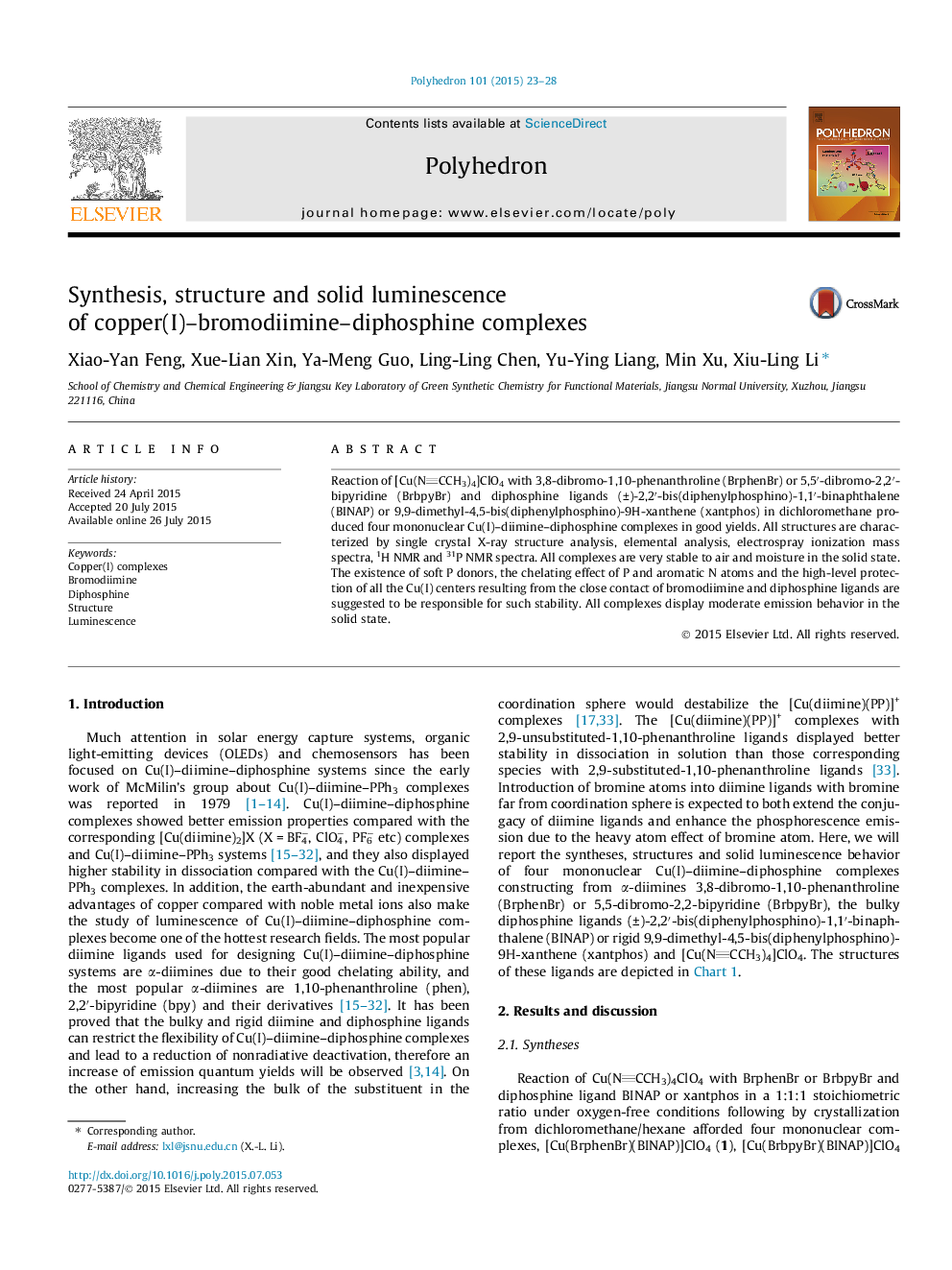| Article ID | Journal | Published Year | Pages | File Type |
|---|---|---|---|---|
| 1336812 | Polyhedron | 2015 | 6 Pages |
Reaction of [Cu(NCCH3)4]ClO4 with 3,8-dibromo-1,10-phenanthroline (BrphenBr) or 5,5′-dibromo-2,2′-bipyridine (BrbpyBr) and diphosphine ligands (±)-2,2′-bis(diphenylphosphino)-1,1′-binaphthalene (BINAP) or 9,9-dimethyl-4,5-bis(diphenylphosphino)-9H-xanthene (xantphos) in dichloromethane produced four mononuclear Cu(I)–diimine–diphosphine complexes in good yields. All structures are characterized by single crystal X-ray structure analysis, elemental analysis, electrospray ionization mass spectra, 1H NMR and 31P NMR spectra. All complexes are very stable to air and moisture in the solid state. The existence of soft P donors, the chelating effect of P and aromatic N atoms and the high-level protection of all the Cu(I) centers resulting from the close contact of bromodiimine and diphosphine ligands are suggested to be responsible for such stability. All complexes display moderate emission behavior in the solid state.
Graphical abstractReaction of [Cu(NCCH3)4]ClO4 with bromodiimine BrphenBr or BrbpyBr and diphosphine ligands BINAP or xantphos in dichloromethane produced four mononuclear Cu(I) complexes in good yields. All complexes display moderate photoluminescence behavior in the solid state.Figure optionsDownload full-size imageDownload as PowerPoint slide
